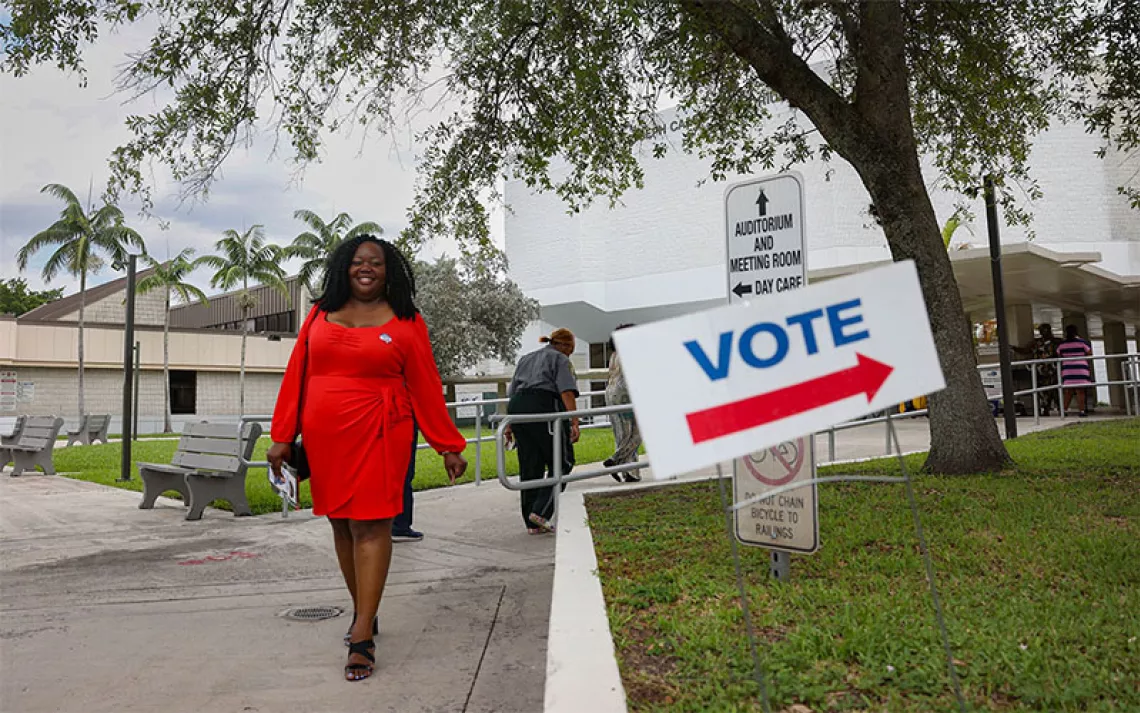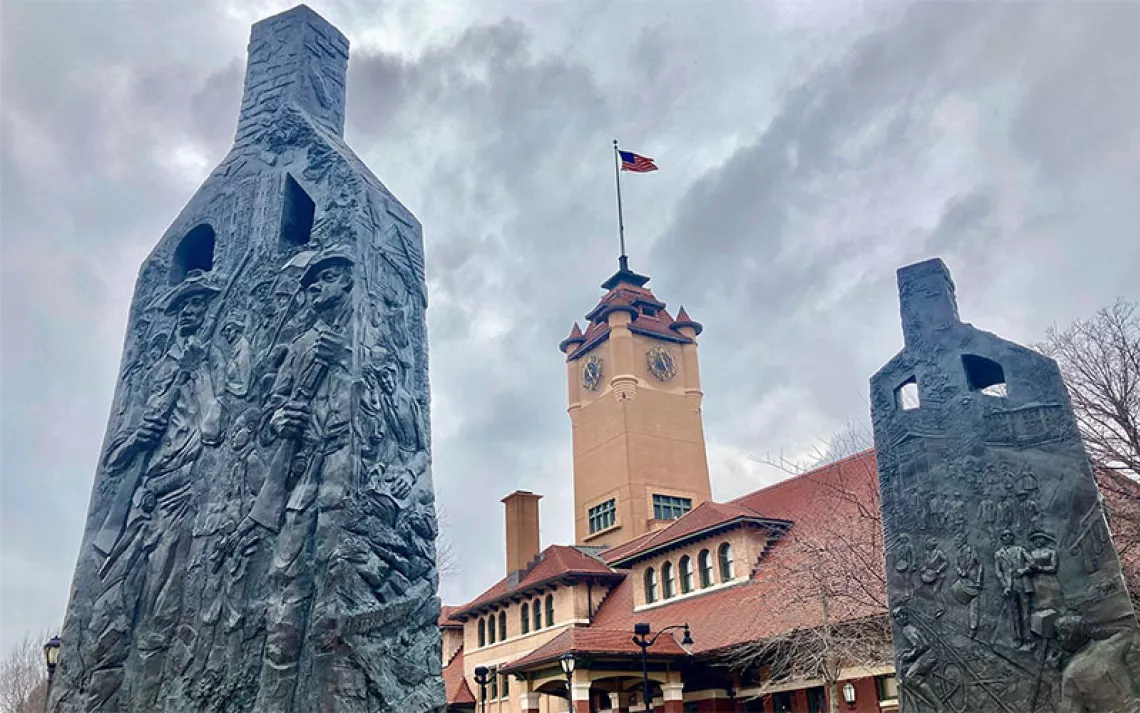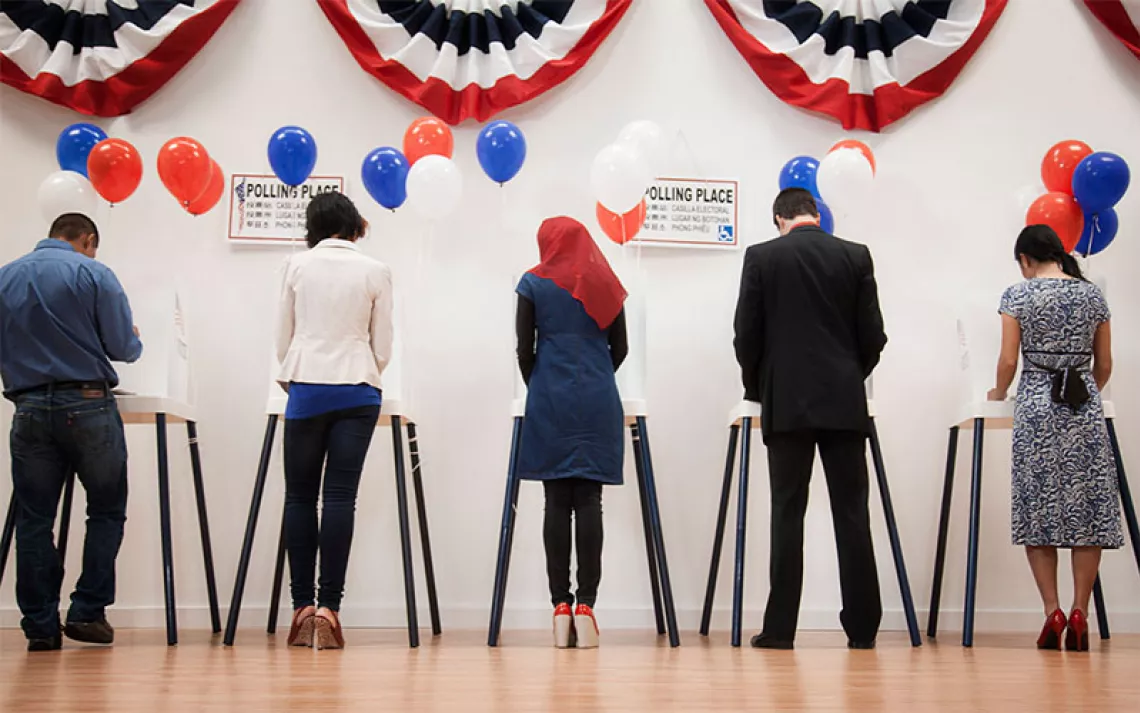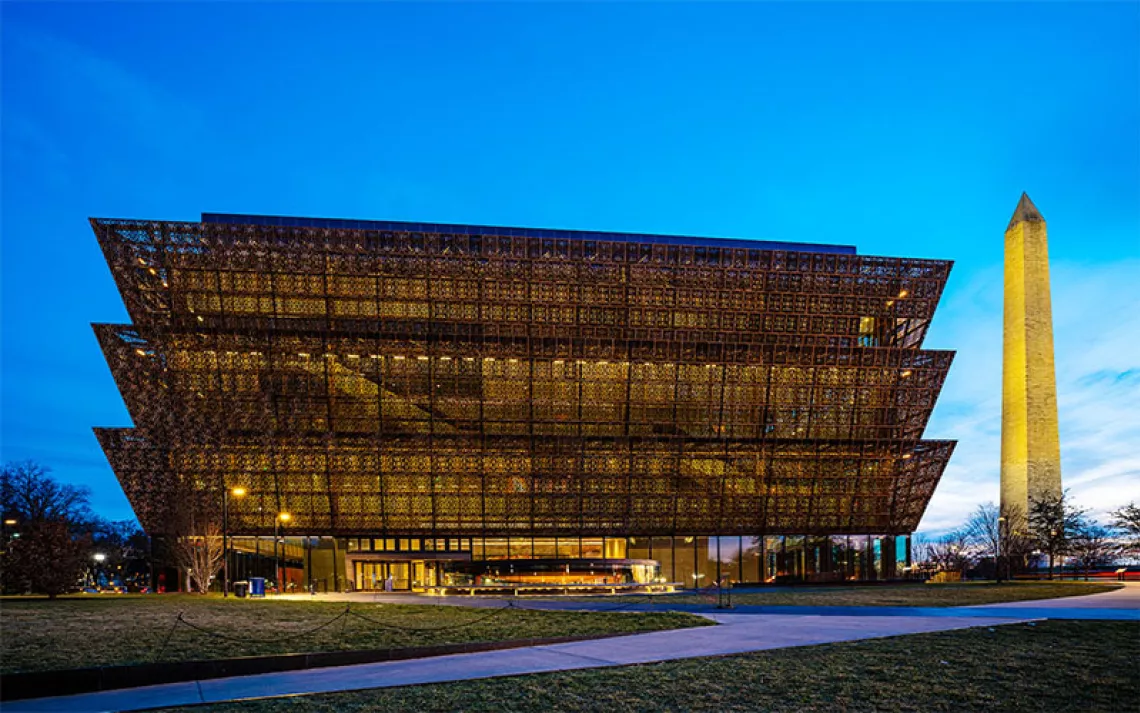Are States Trying to Stop Students From Voting?
It's gotten much harder to vote on many campuses. Here's how to do it anyway.

Photo by Hermosa Wave| iStock
The first time I tried to vote, I stood in line in an elementary school hallway in Michigan. One class of kids had clearly been given an assignment to draw their favorite food, and I had a lot of time to study their Crayola stylings on the wall as the line inched forward over the course of several hours. Every last kid had drawn pizza. Behind me, someone said, “When I get done voting, I’m going to eat a whole pizza.”
At the front of the line, a poll worker told me that I was in the wrong place. They gave me a new address, which was off the side of the highway and too far to walk to. I tracked down a friend with a car and we drove to the new place, which turned out to be a trailer park. It also had a line. This time, the walls of the polling station were decorated with a history of mobile home innovation that ended triumphantly with the invention of the modern manufactured home, which was no longer mobile. When we got to the front, the poll workers looked at us like we were crazy. They said we had to go back to the first polling site.
Back at the elementary school, the line was at least shorter this time. The poll workers shrugged and gave me a phone number to call. The number was busy. I hung up and called it again. Still busy. I did this for a long time. Finally, the poll workers gave me a provisional ballot that they said would be counted if my registration checked out.
At the time, this felt like a victory. Years later, when I told this story to a friend who was an experienced political organizer, she shook her head. “Oh, honey,” she said. “They did not count your vote.”
I thought about this story recently while talking with Beth Alleman, a nursing student who coordinates student voter outreach for the student government at the University of Wisconsin–Madison. The first time Alleman voted, she was an undergraduate in her home state of Illinois. She’d been told—probably inaccurately—that registering to vote at a new location could jeopardize her health insurance, since she was still on her parents’ health-care plan. So on Election Day she took two different trains back to her home district, got someone to pick her up at the station and drive her to her polling place, voted, then drove back and took another two trains to return to Chicago.
College students have a lot at stake in the upcoming midterm elections. Since the 1970s, college tuition has gone from nearly free to impossibly expensive. The 2016 presidential election gave students a secretary of education who has called for massive cuts to federal student aid programs, eliminated regulations that require for-profit colleges to prove the training they offer can actually get its students a decent job when they graduate, and cut loan forgiveness for students of schools that turned out to be outright frauds. In August, Seth Frotman, the official in charge of protecting students from predatory loans at the Consumer Finance Protection Bureau, resigned with a letter that accused the current administration of undercutting the bureau's work. Meanwhile, House Republicans are looking to cut student loan repayment programs designed to help students who get underwater with college debt (bankruptcy hasn’t been an option for student loans since 1978).
There’s also climate change. The faster we stop putting greenhouse gases into the troposphere, and the sooner we build out a grid powered by renewables, the less bleak the future will be—a future the youngest voters will have to live with after the old voters who got them into this mess are dead and gone. The progress America has made toward those goals isn’t enough, and the Trump administration is still working frantically to undo them. The midterm elections could counter that by electing representatives and senators who make the climate a priority.
Getting—and staying—registered to vote is a nationwide problem for people of all ages. But college students have especially acute difficulties getting registered to vote because they are often living in a state or county that is new to them and may not have an in-state driver's license (or any driver’s license at all). They may not have the kind of paperwork—like utility bills or a lease—that is used as proof of residency because they live in a dorm. Since college students change addresses frequently—sometimes every semester—they often have all their mail sent to a parent's house rather than risk it getting lost at an old address.
If they attend a college in a small town or a rural area, students may also discover that their local county clerk doesn’t have the staff to process hundreds, or even thousands, of new voter registrations before every election. Students who register to vote online may not realize that their registration still has to be verified on the receiving end by that same county clerk’s office. “In one of our polling places, the election official for the local town was overwhelmed by the number of registration forms that she had to process,” says Nancy L. Thomas, director of the Institute for Democracy & Higher Education at Tufts. “Students showed up to vote and initially were turned away because their forms hadn’t been processed.”
Sometimes a clerk’s office will make things difficult for students on purpose. For decades in Greenville County, South Carolina, would-be voters who gave an address on the Furman University campus had to fill out an extra form that asked if they had a job, a car, or parents who still claimed them on their tax returns. The form was banned in 2016, after three students sued the county and won.
It’s gotten more difficult for students to vote just in the last decade. When state legislatures went overwhelmingly Republican in the 2010 midterm elections, dozens of them proceeded to close polling places, reduce voting hours, and adopt new voter ID laws that made it more difficult to register. In Florida, the secretary of state banned early voting on college campuses in 2014 (that ban was overturned by a U.S. district court in July). Voting laws are constantly changing across the country, signed into law one day, overruled by courts the next. It’s even hard for experts to keep up.
Both young people and college students are more likely to vote Democrat, and it’s hard not to look at changes to voter registration rules and not suspect that some Republican legislatures aren’t just accidentally pushing students out of the voting process. North Carolina A&T, the nation’s largest historically black college, had its 10,000-person student population split down the middle by Republican lawmakers in 2016. Now, instead of being constituents of the 12th congressional district and represented by an African American alumni of the school, the school’s students are represented by two white male Republicans. In New Hampshire, which has a long history of trying to block student voting, a new law—HB 1264—requires that any student who owns a car must re-register their vehicle with the state before they can register to vote. If the law isn’t overruled by the courts (it probably will be, since the car registration fees could be considered a poll tax), it will take effect in 2019.
After Wisconsin adopted new voter registration rules in 2011, county clerks refused to re-register a 90-year-old woman who had voted in every election since 1948 because she no longer had a driver’s license, and the person who had filled out her 1920s-era birth certificate misspelled her last name. They rejected a man who had a valid Illinois photo ID, proof of address, and a Social Security card but had lost his birth certificate. Wisconsin officials rejected so many people that some voters stopped trying. In the 2016 election, 11 percent of eligible voters in Wisconsin didn’t vote because they didn’t think they would be able to under the state’s new voter ID law. Lack of voter turnout—and outright voter suppression—was credited with Wisconsin’s electoral college votes going to a Republican candidate for the first time since the Reagan landslide of 1984. The state's own attorney general, Brad Schmiel, bragged to MSN that the new law was responsible for the election results.
The University of Wisconsin–Madison, where Beth Alleman is a student, has come up with some work-arounds to help students register to vote under the new voter ID rules. Campus administrators persuaded the local county clerk to waive the standard “utility bill as proof-of-residence” requirement, and the school’s website now has a section that can auto-generate an official letter saying that a student lives on campus. Since Wisconsin does allow same-day voter registration, Alleman has also sent voters out to get a fishing or hunting license, since either can be used as proof of residence.
But once a student in Wisconsin is registered to vote, they still have to bring proof of identity to the polls. A passport qualifies, but an out-of-state driver's license does not. Neither does a standard college ID, because in order to make college IDs that the state would consider valid for voting, UW–Madison would have to create IDs that expire after two years, effectively doubling the university’s printing costs. The school’s work-around is to issue special IDs for students upon request, specifically for voting purposes. But since those special IDs expire every two years, that means that students who realize too late that their ID has expired might assume they can't vote.
As it turns out, a court ruling means that it’s currently legal to use an expired student voter ID. But many students don’t realize this, and some poll workers don’t either. This year the get-out-the-vote contingent on the UW–Madison campus is struggling over how to tell students to get new voter IDs (thus creating the impression that they can’t vote without them) versus telling them they can still use their old IDs after they expire (thus running the risk of students then being turned away by a misinformed poll worker). Wisconsin also requires that people who vote with student voter IDs bring proof of current enrollment to the polls. But at least in Madison, that's been relatively simple, says Alleman; if a student can pull up a class schedule on their phone, local pollworkers will accept that.
Alleman prefers to vote early or absentee. But absentee voting is not smooth sailing either. Alleman has two friends from Ohio who still talk about how their absentee ballots for the 2008 election never arrived in the mail.
Given the detailed online records that exist about all of us, it also doesn’t occur to many teenagers that there is a system that doesn’t immediately know who they are. The cop who pulls them over for driving can match them to a database of people all across the country. Why can’t a polling station? Alleman is also a poll worker, and she’s had people show up who don’t realize that every voter is assigned to a specific polling place. They just think they can, say, step out on their lunch break and vote at the polling place closest to their job.
Despite all the obstacles placed in their way in the last decade, a study by the Institute for Democracy and Higher Education found voting by college students across the country increased by more than 3 percent between the 2012 and 2016 elections. Out of those college students, women voted more than men and social science majors voted more than STEM majors. Black students—like black voters as a whole—voted at a higher percentage than any other group in 2012, but the number dropped 5 percentage points between 2012 and 2016.
There are many groups dedicated to getting students registered to vote. Some colleges are even competing against each other to see who can enroll the most students. “We are working with the University of Iowa to see if we can use sports rivalries to increase turnout,” says Alleman, who is involved in the effort. Survivors of the Marjory Stoneman Douglas school shooting traveled across the country this summer, getting students organized around gun control and registering them to vote. Alexandria Ocasio-Cortez won the Democratic primary during a very low-turnout election partly on the strength of the youth vote—and a large part of her campaign focused on getting new voters of all ages to the polls.
Thomas and the rest of IDHE, meanwhile, are focused not on organizing students, but on organizing colleges to do more to support their own students' political engagement. “Nationally, the voting rates for college students are horrible,” says Thomas. “Eighteen to 19 percent of the students in our database voted in 2014. That’s one in five. And with first-time voters, that percentage drops down to 12 percent."
The Tufts study also found that a few schools had remarkably high voting rates, even in hostile states. When the Tufts researchers visited these schools in person, says Nancy Thomas, they found that colleges with high voting rates had an unusually high level of political engagement, period. Faculty were comfortable talking politics in class. Students talked about politics even when there wasn’t an election going on. “They talked about issues in particular,” Thomas says. “Students are disenchanted with the parties, but they love the issues.”
Want to vote in the midterm election? Here’s how.
If you’re going to college in a different state than the one you grew up in, decide if you want to vote absentee in your home state (every state allows absentee voting). Even if you’re attending college in another country, you can still register to vote absentee. Even if you aren’t 18 yet, you can still register—you just can’t vote until you turn 18.
If you want to vote where you’re attending school, find out where you can register and what identification you’ll need. In some states, you can register to vote online; in others you’ll have to do it by mail (you can print out forms online or pick them up at a local DMV or post office) or in person at your local state or county election office. Some states also have voter registration at the DMV, military recruitment centers, and state and county public assistance offices.
Some states require proof that you’ve lived in a state for a certain amount of time before registration—usually this is 20 to 30 days. So if you’re planning on using a utility bill or bank statement as proof of residence, make sure it’s older than 30 days (but not older than 90 days). If you live on campus, check with your college about what address to use on your voter registration form and if the school can provide you with a proof of residence letter or a student ID that can double as voter identification.
If you’re already registered to vote, make sure to double-check that you haven’t been dropped from the rolls—it does happen.
Read up on the issues. Not just the big races but also the state and local ones, and any ballot initiatives, if those are a thing in your state. Voter guides can be a big help, but make sure to read a few of them so that you can get different perspectives on what’s at stake.
In most states, voters need to register by a certain deadline in order to vote in an election; this is usually somewhere from eight to 30 days before the election. But 15 states and the District of Columbia also allow voters to register on Election Day itself. If you do this, try to show up early in case you have problems. Bring as much documentation as you can in terms of identification and proof of residence, so that if one form is rejected, you don’t have to go back and get another one.
If a poll worker is telling you that you can’t vote, you can call the Department of Justice Voting Rights Hotline (800-253-3931) or the Election Protection Hotline (866-OUR-VOTE) for backup. In many cases, poll workers only receive a few hours of training and may not completely understand the voting regulations in their own districts.
When you register to vote, and when you vote, invite other people to come with you. It will help pass the time, and it will also help friends of yours who want to vote but don’t have the wherewithal to figure out all the details of actually how to do it. Voting can be incredibly confusing the first time you do it, and it helps to have allies in navigating the process—especially if you find yourself standing in line for hours looking at children's drawings of pizza.
**This story has been updated since publication. We initially referred to Greenville County, North Carolina, as the location of Furman University. The school is in fact located in South Carolina.
 The Magazine of The Sierra Club
The Magazine of The Sierra Club



